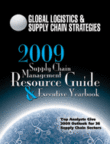
Visit Our Sponsors |
|
|
|
|
|
|
|
|
|
|
|
|
|
|
|
|
|
|
|
|
|
|
|
|
|
|
|
|
|
|
|
|
|
|
|
|
|
|

According to Best-in-Class CPG manufacturing companies, the top pressure is the lack of sufficient visibility towards trade marketing-related customer insights that support retail-level execution strategies. Companies lack location and unit-level promotion visibility, shopper insights, and shelf-level sales performance information that enable optimum trade promotion ROI.
The reasons for the deficiency in retail shelf-level insights are due to:
• Sixty-Five per cent of manufacturers use legacy trade promotion systems and home-grown trade marketing processes which do not offer collaborative tools or feature/functionality for shopper insights or buying behavior to their user organizations. These collaborative data sharing, planning and execution-related analytical tools enable visibility towards shelf-level promotion product display optimization, shopper marketing insights, and sales performance data in varied segments such as grocery, specialty or general merchandise
• Currently, 64 percent of manufacturers face internal fragmentation when it comes to trade marketing data, performance metrics, planning objectives and retail compliance guidelines for sales, marketing, and finance organizations
• Point-of-sale transaction data from retail locations is still a hurdle for 66 percent of manufacturers. Such low levels of POS transaction data sharing between retailers and manufacturers leads to increased complexities in tracking promotion effectiveness at the store or field level.
These retail-level tribulations mean that departments at manufacturing companies are currently using: 1) assumption-based forecasts; 2) repetitive planning of corporate, account, and discretionary promotions; and 3) reactive approach towards controlling cost of promotions, which is currently impacting 63 percent of companies surveyed.
The Outlook
Continuous trade promotion management (TPM)-Instead of evaluating trade promotion strategy once in a year or even once in two years, CPG companies need to adopt a continuous improvement approach. The following five ways enable a win-win TPM strategy:
Aligning trade strategy to corporate business goals. Companies need to do Pareto (80/20) analysis based on the profit margin as well as supply chain flexibility and identify the right products to assign trade funds to.
Surgical accuracy in retail level execution. Best-in-Class companies are 1.5 times as likely as All Others to be able to drill down precisely into the data to identify the highest-impact trade activities and then create coordinated programs around these. Event management for these companies is both science and an art. These companies work closely with their retail counterparts to ensure that a cadence of event management is maintained.
Choosing the right partners. Companies cannot and should not focus their entire effort towards all the retailers. They are able to create an incentive for retailers to participate in the TPM process by taking the bold step of firing their lower-performing customers-in the sense that they may not allow some of their retailer customers to take advantage of some promotions.
Building the right processes. TPM is too big of an area to tackle in one big swoop. Best-in-Class companies are able to perform a prioritization exercise to identify the business processes that have the highest ROI. These companies are able to create linkages/coordination with adjacent organizations to maximize the value of these processes.
Choosing the right tools and training methodologies. The importance of training and tool selection cannot be underestimated especially in a nascent area of win-win TPM. Best-in-Class companies realize the importance of technology as the third dimension after people and processes. However, they do not look at technology as a panacea. Given the organizational boundaries that the TPM processes crosses, training is critical.
RELATED CONTENT
RELATED VIDEOS
Timely, incisive articles delivered directly to your inbox.

